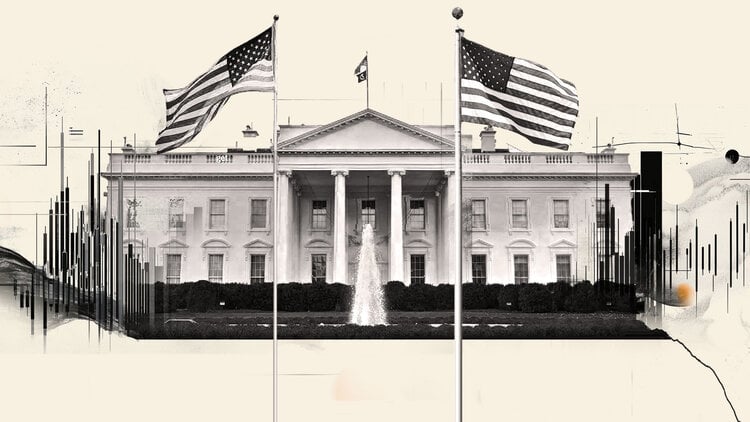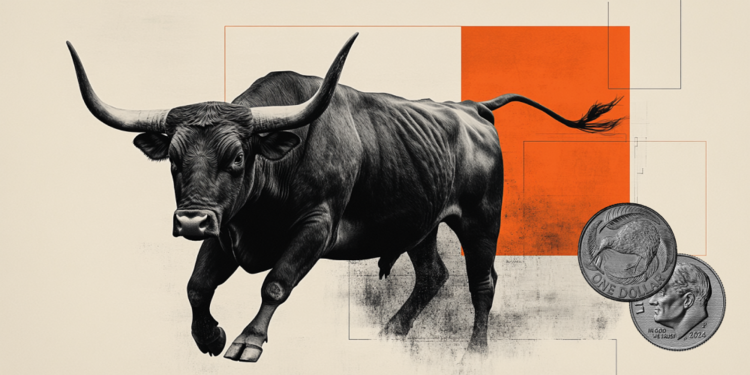This is what you need to know to operate today Tuesday, June 10:
He US Dollar (USD) He stands firm in front of his peers in the European session on Tuesday. Investors refrain from taking great positions while waiting for the result of commercial conversations between the United States (USA) and China, who will continue in London later in the day. The NFIB optimism index for May will be the only highlight in the US economic calendar.
US dollar last 7 days
The lower table shows the percentage of change of the US dollar (USD) compared to the main currencies last 7 days. American dollar was the strongest currency against the Japanese yen.
| USD | EUR | GBP | JPY | CAD | Aud | NZD | CHF | |
|---|---|---|---|---|---|---|---|---|
| USD | 0.27% | 0.11% | 1.24% | -0.05% | -0.31% | -0.22% | 0.47% | |
| EUR | -0.27% | -0.13% | 1.01% | -0.29% | -0.56% | -0.40% | 0.21% | |
| GBP | -0.11% | 0.13% | 1.11% | -0.17% | -0.43% | -0.29% | 0.34% | |
| JPY | -1.24% | -1.01% | -1.11% | -1.28% | -1.56% | -1.44% | -0.70% | |
| CAD | 0.05% | 0.29% | 0.17% | 1.28% | -0.32% | -0.13% | 0.52% | |
| Aud | 0.31% | 0.56% | 0.43% | 1.56% | 0.32% | 0.15% | 0.78% | |
| NZD | 0.22% | 0.40% | 0.29% | 1.44% | 0.13% | -0.15% | 0.63% | |
| CHF | -0.47% | -0.21% | -0.34% | 0.70% | -0.52% | -0.78% | -0.63% |
The heat map shows the percentage changes of the main currencies. The base currency is selected from the left column, while the contribution currency is selected in the upper row. For example, if you choose the US dollar of the left column and move along the horizontal line to the Japanese yen, the percentage change shown in the box will represent the USD (base)/JPY (quotation).
In the absence of high -impact data publications, commercial action in financial markets remained relatively calm at the beginning of the week. The main Wall Street indices ended Monday with minimal profits and the USD index registered small losses. On Tuesday morning, the USD index marginally listed higher, slightly above 99.00, while US stock indexes futures remain practically unchanged in the day.
The data published by the National Statistics Office of the United Kingdom (ONS) showed early on Tuesday that the ILO unemployment rate rose 4.6% in the three months to April from 4.5%, as anticipated. In this period, annual salary inflation, measured by the variation of average gains excluding bonuses, softened 5.2% from 5.5%. Finally, the change of employment was 89K, compared to 112K previously. GBP/USD It remains defensive and listed below 1,3550.
After finishing the first day of negotiation of the week slightly higher, EUR/USD Fluctua in a narrow channel around 1,1400 in the European morning on Thursday. China’s vice president Han Zheng, said Tuesday that the Chinese government is ready to work with the European Union to further expand cooperation areas and promote new development in Chinese-EU relations. Later in the session, the confidence data of the Sentix investor for June in the European Economic Calendar will be published.
The governor of the Bank of Japan (BOJ), Kazuo Ueda, repeated on Tuesday that interest rates will increase if they have enough confidence that the underlying inflation is approaching 2% or remains around 2%. After the volatile action of Monday, USD/JPY Fight to find address early on Tuesday and quote about 144.50.
AUD/USD Go up and down in a narrow range above 0.6500 in the European morning. Australian data showed that Westpac’s confidence decreased to 0.5% in June from 2.2% in May.
Gold He maintains his position and ended the day in positive territory after falling below $ 3,300 in the first Asian session on Monday. The Xau/USD remains calm on Tuesday and continues to move laterally above $ 3,300.
Commercial War between the US and China Faqs
In general terms, “Trade War” is a commercial war, an economic conflict between two or more countries due to the extreme protectionism of one of the parties. It implies the creation of commercial barriers, such as tariffs, which are in counterbarreras, increasing import costs and, therefore, the cost of life.
An economic conflict between the United States (USA) and China began in early 2018, when President Donald Trump established commercial barriers against China, claiming unfair commercial practices and theft of intellectual property by the Asian giant. China took retaliation measures, imposing tariffs on multiple American products, such as cars and soybeans. The tensions climbed until the two countries signed the Phase one trade agreement between the US and China in January 2020. The agreement required structural reforms and other changes in China’s economic and commercial regime and intended to restore stability and confidence between the two nations. Coronavirus pandemia diverted the attention of the conflict. However, it is worth mentioning that President Joe Biden, who took office after Trump, kept the tariffs and even added some additional encumbrances.
Donald Trump’s return to the White House as the 47th US president has unleashed a new wave of tensions between the two countries. During the 2024 election campaign, Trump promised to impose 60% tariff particularly in investment, and directly feeding the inflation of the consumer price index.
Source: Fx Street
I am Joshua Winder, a senior-level journalist and editor at World Stock Market. I specialize in covering news related to the stock market and economic trends. With more than 8 years of experience in this field, I have become an expert in financial reporting.





